Shocks, Impacts, Vibrations, and Tilts: How to Monitor and Indicate Them
Whenever a pallet is dropped from a crane, bumped by a forklift, or bounced along rough roads, it experiences an impact (or shock). Whenever cargo is exposed to the rumble of a ship’s engine, the humming of a truck, the vibrations of a reefer’s condenser, or during its own operations, those vibrations may reverberate among components. When fragile cargo is stored in warehouses, loaded in containers, or transferred to box trucks for last-mile delivery, it may experience dangerous tilt. Each of these situations may damage the cargo, and SpotSee has specific supply chain monitoring solutions for each (and some that meet multiple demands) to give you a tailored digital supply chain.
Sensors: Monitors and Indicators
Impact, tilt, and vibration, though, aren’t the only considerations to make when keeping track of damage with logistics monitoring. You must also decide whether you need a monitor or an indicator. Both of these types are considered sensors, because they sense damage (shock sensor, tilt sensor, vibration sensor) — but they’re inherently different.
Monitors
Shock monitors, typically electronic, require power (usually from batteries) to measure shock events across one or multiple axes. As monitors, they continuously record shock events until they lose power or are disconnected. Monitors can have custom parameters and be connected via satellite, cellular, Bluetooth, USB, or RFID. Supply chain monitors include SpotSee’s SpotBot®️ Cellular, ShockLog®️ Cellular, ShockLog Satellite, and standard ShockLog with USB connectivity, as well as the g-View impact sensor/g-force monitor.
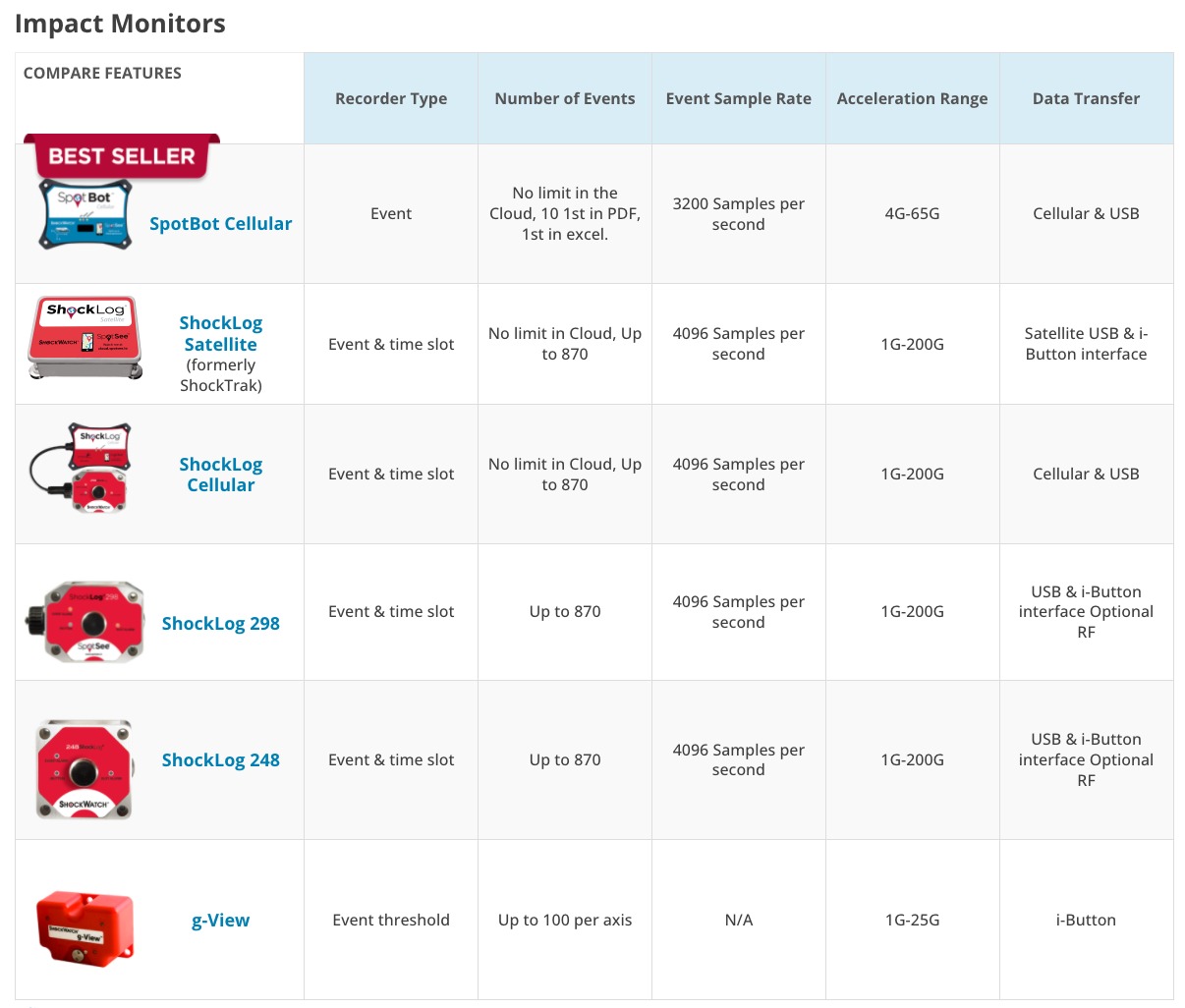
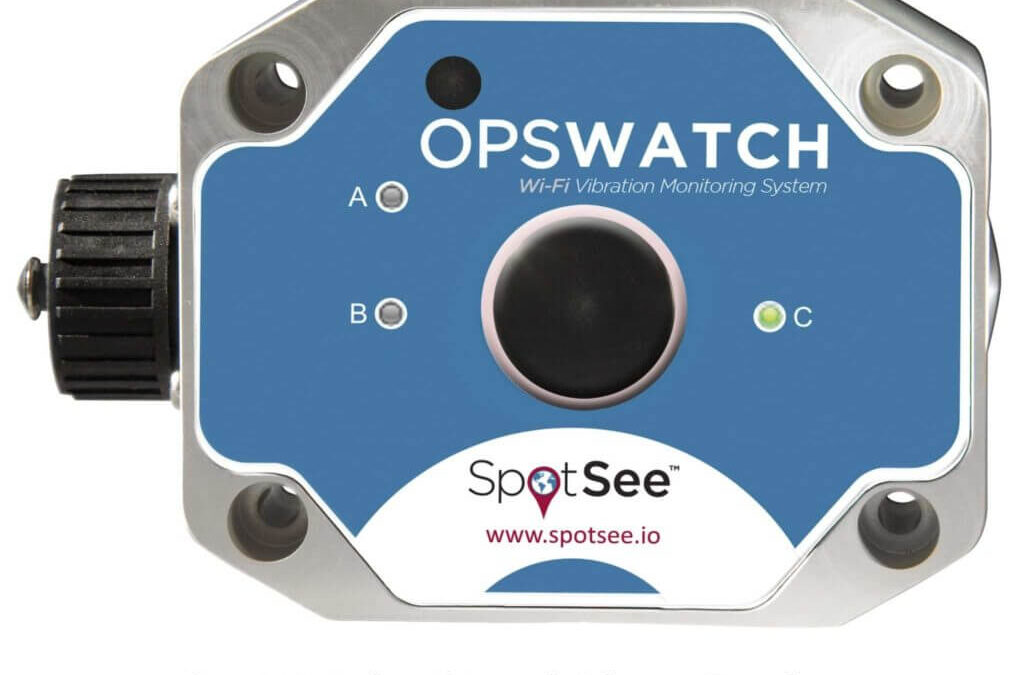 Condition monitors are extremely beneficial in other applications, too. Damage from impacts and vibrations are real concerns after equipment is installed and operating. Cavitation triggers damage to pumps and propellers, vibrations trigger problems in cooling systems, and impacts adversely affect even mining and drilling equipment, like the top drives used in onshore and offshore drilling. Because these vibrations occur at low frequencies, they often aren’t detected until they’ve triggered other, bigger, problems. Installing a stationary vibration monitor like SpotSee’s OpsWatch alerts you to impending damage before it occurs, enabling proactive maintenance, even in harsh environments. The OpsWatch has a temperature range of -40° to 85° C (-40° to 185°F).
Condition monitors are extremely beneficial in other applications, too. Damage from impacts and vibrations are real concerns after equipment is installed and operating. Cavitation triggers damage to pumps and propellers, vibrations trigger problems in cooling systems, and impacts adversely affect even mining and drilling equipment, like the top drives used in onshore and offshore drilling. Because these vibrations occur at low frequencies, they often aren’t detected until they’ve triggered other, bigger, problems. Installing a stationary vibration monitor like SpotSee’s OpsWatch alerts you to impending damage before it occurs, enabling proactive maintenance, even in harsh environments. The OpsWatch has a temperature range of -40° to 85° C (-40° to 185°F).
Indicators
Of course, not every package needs constant monitoring. Sometimes, as with consumer electronics, scientific instruments, and even certain pharmaceuticals, go/no-go indicators may be enough. SpotSee has a variety of devices — even for curved surfaces — that change color when they receive impacts above specified thresholds, thus alerting recipients to inspect the items for hidden damage. SpotSee’s ShockWatch®️ 2, ShockDot, MAG 2000, and Clip are just a few options for impact sensors and impact indicators.
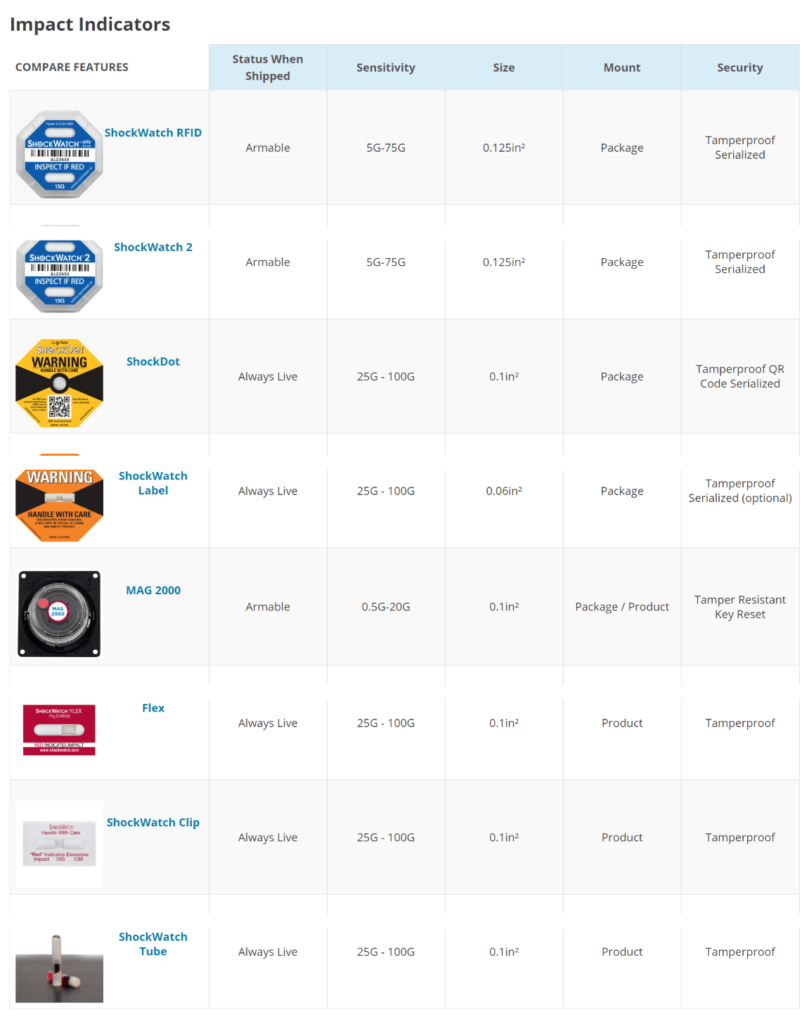
Indicators, which are mechanical and require no power source, are a simpler solution because they don’t monitor every shock event throughout life. Rather, they offer immediate visual responses (such as turning red) to indicate that shock has occurred. Indicators have set parameters, but can be reset and reused; however, they aren’t “connected,” since they are mechanical.
When Tilts Matter
Shower doors, automotive windshields, and plate glass can be damaged when they are stored at an angle. Surprisingly, so can refrigerators and other equipment. Adding a visible tilt indicator (note: not a monitor) device helps prevent that damage by serving as a visual cue to handlers that tilt matters — and that they’ll be held accountable for any damage.
SpotSee’s TiltWatch® XTR, for example, turns red if the package is tilted at angles greater than 80 degrees. Normal handling, however, won’t trigger the indicator. Other devices, like the SpotSee TiltWatch Plus, also show the degree and direction of tilt, as well as complete overturn. Because tilt indicators are visible, fixed to the outside of the package, cargo handlers know someone cares about this specific package and is watching its handling. As a result, they tend to be more careful.
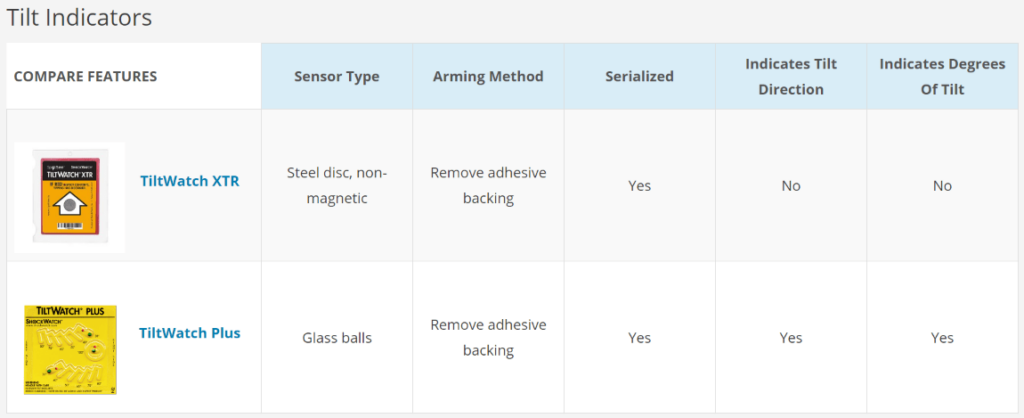
Tilt indicators allow you to audit possible damage before signing off on a delivery, so you can refuse shipments if they tilt beyond the necessary threshold. Tilt indicators can also help you evaluate and optimize supply chains by evaluating how much tilt, if any, occurs between different shipping methods.
Impacts (Shocks) in Transit
Cargo, usually, is most susceptible to damage from impacts while it’s in transit. During this time it may endure multiple modes of transport and multiple handoffs. Certain impacts are expected, but when they exceed what’s considered normal, monitors like SpotSee’s ShockLog 298 record them. Impact events, their maximum amplitude, duration, and direction of the force along X, Y, and Z axes are recorded by impact monitors so you can better assess what actually happened and the likely extent of the damage.
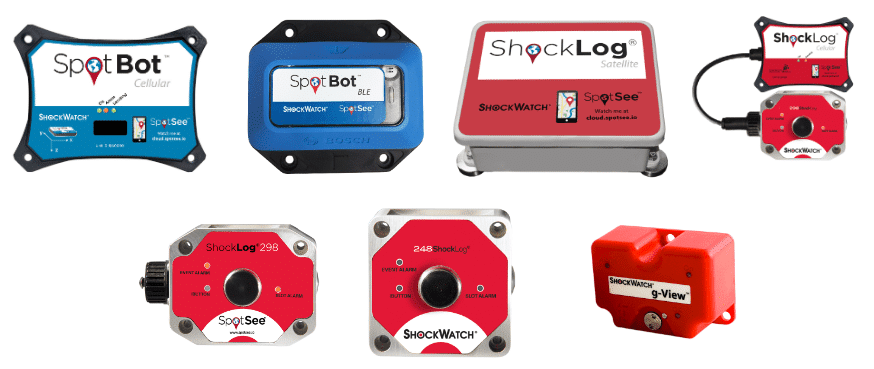
The ShockLog 298 family includes robust, optional, modules for even greater visibility into your supply chain and logistics network. Options include GPS, so you know where potentially damaging events occurred, as well as a temperature, humidity, and pressure sensor handy for intermodal and ocean freight or when specialized monitoring is required.
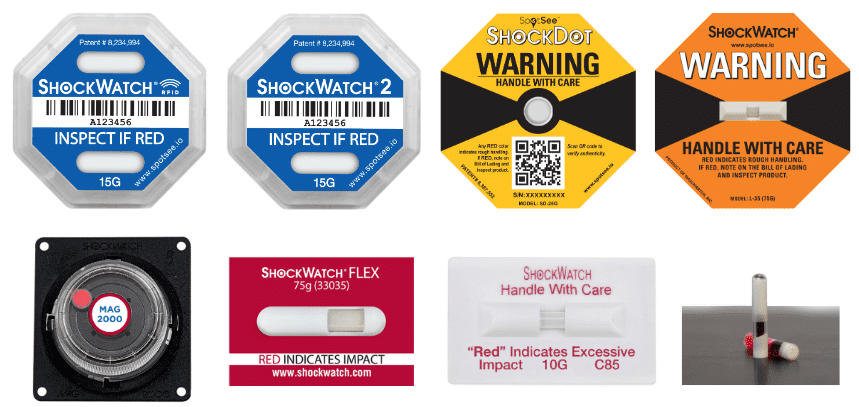
For real-time reporting anywhere there is cell or satellite service you can add the ShockLog Cellular or ShockLog Satellite modules. As a result, whenever thresholds are exceeded, you can take action quickly to prevent further damage. Explore all of SpotSee’s impact monitoring and impact indicator products at the Impact web page.
Vibration Monitoring
While it may seem similar to impacts and tilts, vibrations are typically less of an event and more of a condition. OpsWatch, pictured here as part of SpotSee’s vibration monitors, is ideal for stationary objects and is typically not used in supply chain environments, but rather on equipment or structures. During setup, vibration monitors are calibrated to the equipment’s standard operating vibration or resonance.

Then, they can provide constant monitoring or give alerts when vibrations increase or decrease out of a designated threshold. This can let maintenance professionals and operators that the equipment isn’t operating properly and may be in need of mechanical adjustment — or that it’s about to fail and requires immediate attention, shutdown, or other action. Common applications include oil and gas drilling equipment, mining silos, and aggregate material equipment It can also be used to measure pipe vibration to keep track of pump condition. Vibration monitoring tracks equipment operation, meaning less downtime, fewer failures, reduced maintenance costs — and longer service life for that expensive, sensitive machinery.
Making the Choice
Clearly, shock sensors — in reality, indicators and monitors for impact, tilt, and vibration — have many permutations. Choosing the right one provides invaluable visibility into exactly what happened — including the magnitude of impact, its direction, as well as its location and the temperature and humidity at the time — or, if you prefer, simply that an event occurred.
Let SpotSee’s experts help you choose the right solution for your needs. Get in touch with us today with the form below for a free consultation to start optimizing your supply chain or monitoring essential equipment and structures to save money and reduce downtime.







